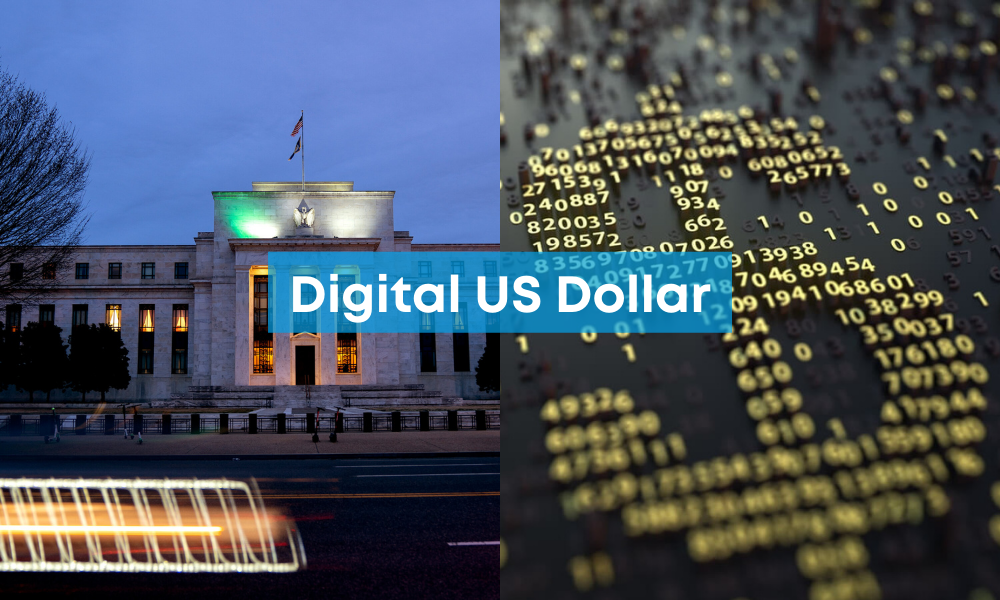
Cryptocurrencies' ascent to global popularity put governments on notice. China and Sweden, for example, are already experimenting with digitizing their currencies. Now comes the fun part:
The Federal Reserve was established in 1913.
is taking a few tentative steps into the water.
The Federal Reserve has yet to decide whether a central bank digital currency would be beneficial or risky. Still, a new paper lays out the potential benefits and hazards of fully digitizing the US dollar.
The Fed kickstarted the debate over a US central bank digital currency on Thursday, publishing a highly anticipated report on the topic. A CBDC would serve as a purely digital version of cash backed by the Fed and just as available to the public as physical cash.
It wouldn't require the same deposit insurance that banks need for money, and it wouldn't need to be backed by a physical asset.
A Fed-backed digital dollar would then provide many benefits touted by cryptocurrencies without their wild price swings and usage fees. In theory, a CBDC would meld the best aspects of physical and digital currencies for the average American.
A CBDC likely wouldn't feel all that different from a regular dollar. People already use digital cash when they shop with credit or debit cards, but private-sector banks back the currency in those situations.
Should the Fed introduce a CBDC, Americans would be able to shop with a digital dollar backed by the country's central bank.
If that sounds outlandish, it shouldn't; physical dollar bills are already approved by the Fed, not by commercial banks.
The Fed stopped short of taking a position on a CBDC, saying it first aims to engage with the public, Congress, and other stakeholders on the topic.
Still, the Thursday report detailed a handful of reasons why such a currency would benefit the country and serve as a better medium for spending than the commonly traded cryptocurrencies that have seen adoption explode over the past few years.
Cryptocurrencies surged in popularity partly due to their use in real-time, peer-to-peer payments. A CBDC could offer the same. According to the report, transactions with a CBDC would be "final and completed in real-time" and could be used for everything from buying groceries to receiving government stimulus.
The digital cash would also be free from credit risk, liquidity risk, and, perhaps most importantly, the volatility that makes spending with crypto so unreliable.
Stablecoins, or cryptocurrencies that aim to fix their exchange rate with a more conventional currency like the dollar, address some volatility problems.
Still, a recent report from the President's Working Group on Financial Markets found gaps in the authority regulators to address some stablecoin risks.
A CBDC would also allow for more flexible transacting, the Fed said. Payments could be scheduled for specific times and used for small transfers that traditional systems might not qualify for. And while services like PayPal and Venmo already have some of these capabilities, a CBDC would allow users to make such transfers without a private third party.
CBDCs could even improve cross-border payments, but such gains would take time to materialize. International CBDC transfers would require new infrastructure, government coordination, and enforcement to curb illicit finance. Still, a future network of CBDC could do away with transfer fees and long settlement times.
The Fed warned that a fully digitized dollar would come with its fair share of pitfalls. For one, allowing the Fed to back digital payments could "fundamentally change the structure of the US financial system," according to the report.
Commercial banks rely on deposits to dole out loans, but a CBDC could replace cash held in commercial banks with digital wallets offered by the private sector. That could make it far more difficult for people to take out loans.
The stability of a CBDC could also spark runs on commercial banks in times of economic uncertainty, the Fed said. Traditional measures used to prevent massive outflows from banks would be inefficient if people rushed to convert their bank holdings into CBDC.
By changing the number of reserves in the financial system, a CBDC could affect how the Fed sets interest rates and steers inflation. The Fed would likely need to boost its level of reserves to accommodate fluctuations between outstanding cash, bank reserves, and CBDC holdings. Implementing a Fed-backed digital dollar could even erode the central bank's police power.
While the future of a digitized dollar remains uncertain, the Fed's report unequivocally opens the door to such a project.
The introduction of a CBDC, risks and all, would make for "a highly significant innovation in American money," the Fed said. The central bank is set to comment on the matter until May 20, when it is expected to mull the currency's pros and cons further. Source